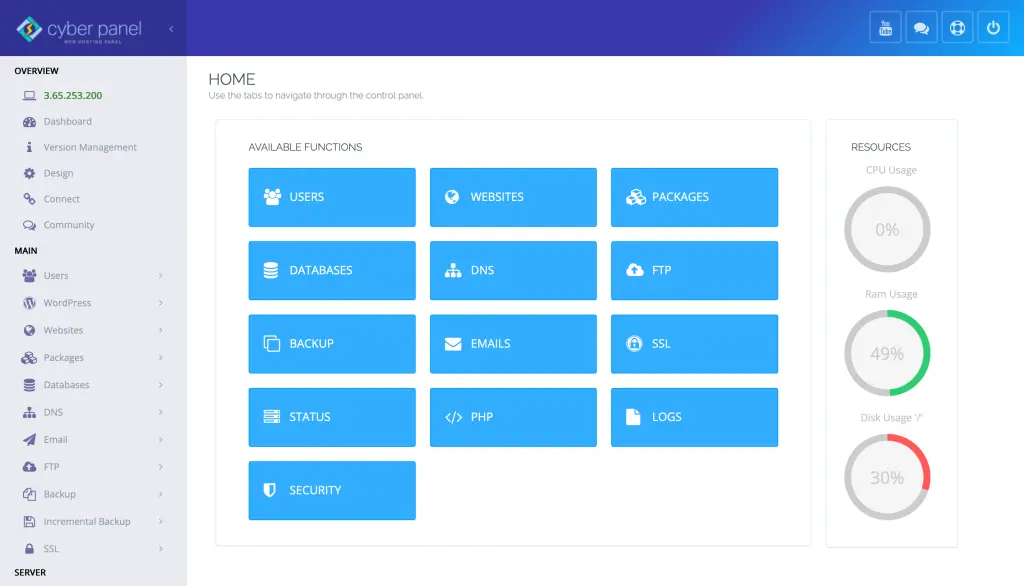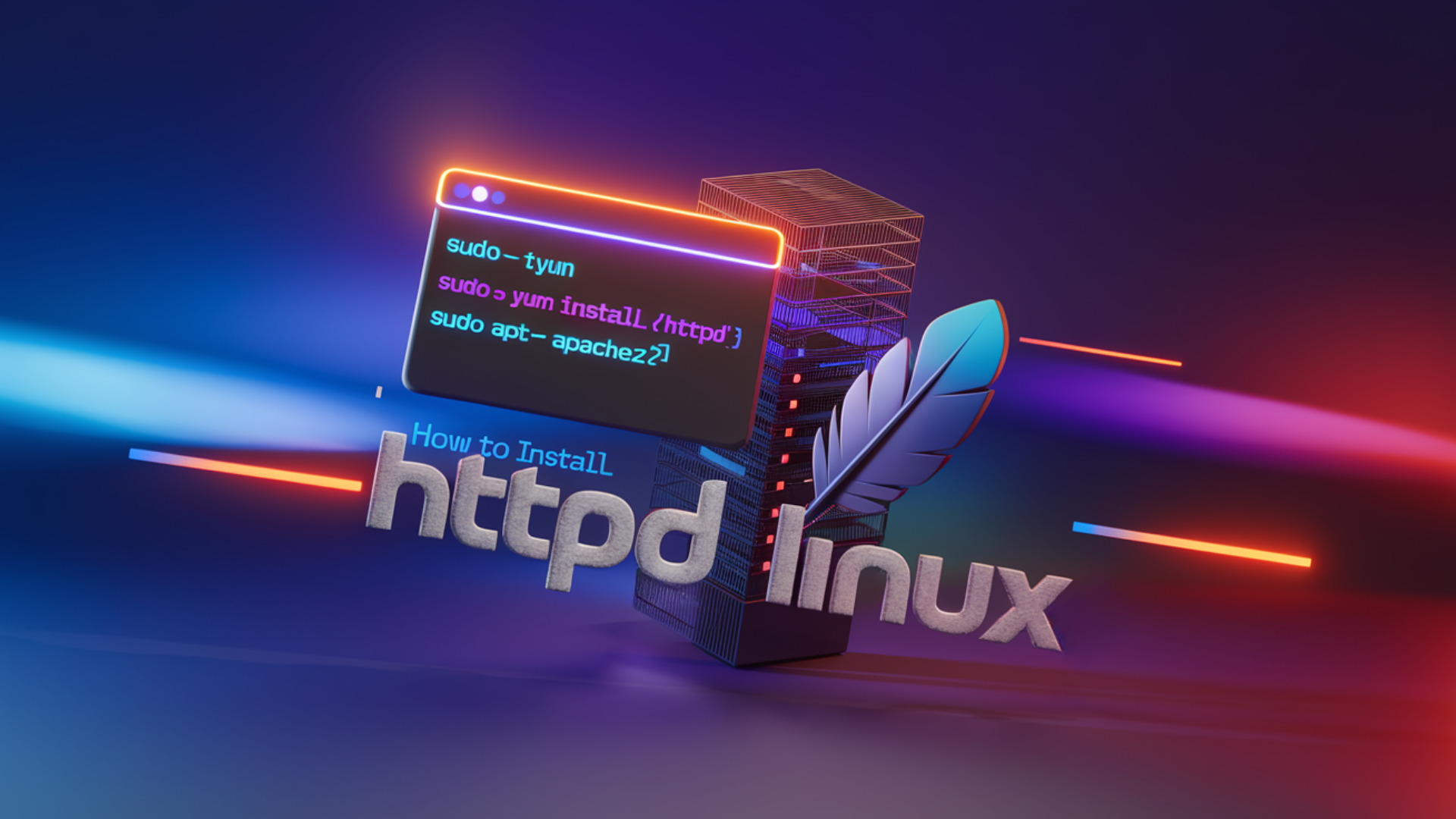If you’ve been wondering how to install HTTPD on Linux, you’ve found the right article! Apache HTTPD or Apache HTTP Server is one of the most robust and most used web server solutions available in the market today. Installing HTTPD is a skill that every Linux user must learn whether he is handling a personal website or a corporate web application. Keep reading this guide to learn everything you need to know to successfully install HTTPD on your Linux system from beginning to end, with straightforward commands to get your web server running as quickly as possible. So, let us get started with installing HTTPD in Linux!
What Is HTTPD and Why Do You Need to Install It?

Hypertext Transfer Protocol Daemon (HTTPD) is the application software that your web server runs. By enabling you to serve web pages using the HTTP protocol on the open internet, Apache HTTPD is one of the most widely used, stable web servers ever created. With Apache on Linux, you make sure that your server can now serve incoming requests and dynamic web content.
For someone just starting with web hosting or creating a server this is step one to becoming an expert in finding out how to run web servers and so on.
Prerequisites to Install HTTPD on Linux
Before you start with the Httpd install Linux, ensure that you have the following prerequisites:
- A Linux OS (Ubuntu / CentOS / Fedora, etc.).
- Access to your machine as either the root or the sudo user
- A terminal (command-line interface) for typing installation commands.
To do so, you will need to prepare these before you can move forward with the installation process.
How to Install HTTPD in Linux: Step-by-Step Guide
Step 1: Update Your System
Before proceeding with the installation, it is always recommended to execute the system update. To update your package repository, open the terminal and execute the below command.
Get exclusive access to all things tech-savvy, and be the first to receive
the latest updates directly in your inbox.
sudo apt update # For Ubuntu/Debian-based systems
sudo yum update # For CentOS/Fedora-based systemsThis helps to make sure you have the latest updates for your system and that all dependencies for Apache HTTPD will be properly installed.
Step 2: Install Apache HTTPD
Now that your system is updated, the next step is to install HTTPD. Different package managers are used based on the Linux distribution.
For Ubuntu/Debian:
To install Apache HTTPD on Ubuntu or Debian os, run apt command:
sudo apt install apache2For CentOS/Fedora:
For CentOS or Fedora-based distros, you can use yum (for older version) or dnf (for newer version):
sudo yum install httpd # For CentOS 7
sudo dnf install httpd # For CentOS 8/FedoraStep 3: Start Apache HTTPD Service
Now, we need to start the HTTPD service to serve the web pages. In order to run the service, execute this command:
sudo systemctl start apache2 # For Ubuntu/Debian-based systems
sudo systemctl start httpd # For CentOS/Fedora-based systemsStep 4: Configure Apache to Start on Boot
To enable HTTPD to start on boot, run the command:
sudo systemctl enable apache2 # For Ubuntu/Debian-based systems
sudo systemctl enable httpd # For CentOS/Fedora-based systemsStep 5: Verify the Installation
To confirm that HTTPD has been installed and is running, we will open a web browser and enter our server’s IP address. You will be presented with the Apache default welcome page.
Or simply run the following command to check the service status:

sudo systemctl status apache2 # For Ubuntu/Debian-based systems
sudo systemctl status httpd # For CentOS/Fedora-based systemsHow to Install HTTPD on Linux with Custom Configuration
In some circumstances, advanced users might need to install HTTPD with their own configurations. You can then go on to do things like set a different location for your web files, turn on SSL, and basic settings that are tailored to your preferences.
Apache configuration files are commonly stored in:
/etc/apache2/apache2.conf for Ubuntu/Debian
/etc/httpd/httpd.conf for CentOS/FedoraThese files contain configurations that can be modified to configure your server settings like document root, virtual hosts, or SSL.
sudo nano /etc/apache2/apache2.conf # For Ubuntu/Debian-based systems
sudo nano /etc/httpd/httpd.conf # For CentOS/Fedora-based systemsTo restart Apache after you make changes to the configuration file:
sudo systemctl restart apache2 # For Ubuntu/Debian-based systems
sudo systemctl restart httpd # For CentOS/Fedora-based systemsTroubleshooting HTTPD Installation
Even after installing HTTPD on Linux, you may encounter issues, especially related to configuration or permissions.
1. HTTPD Service Won’t Start
If the Apache HTTPD service won’t start, check the system logs for errors:
sudo journalctl -xe | grep apache2 # For Ubuntu/Debian-based systems
sudo journalctl -xe | grep httpd # For CentOS/Fedora-based systemsYou can also check the Apache error logs:
/var/log/apache2/error.log # For Ubuntu/Debian-based systems
/var/log/httpd/error_log # For CentOS/Fedora-based systems2. Firewall Blocking Apache
If your firewall is blocking incoming HTTP traffic on port 80, you can open the port with the following commands:
For Ubuntu/Debian:
sudo ufw allow 80/tcpFor CentOS/Fedora:
sudo firewall-cmd --permanent --add-service=http
sudo firewall-cmd --reload3. Check for Port Conflicts
Sometimes, HTTPD might not start if another service is already using port 80. You can check if this is the case with:
sudo netstat -tuln | grep :80If another service is occupying the port, stop it and then restart Apache HTTPD.
Uninstalling HTTPD from Linux
If you no longer need Apache HTTPD, uninstalling it is easy. Use the following commands to remove Apache HTTPD:
For Ubuntu/Debian:
sudo apt remove apache2For CentOS/Fedora:
sudo yum remove httpd # For CentOS 7
sudo dnf remove httpd # For CentOS 8/Fedora
CyberPanel’s Role in Installing HTTPD along With Web Hosting

CyberPanel is a web hosting control panel that allows even a novice server administrator to manage servers, websites, and databases easily. CyberPanel also adds value in simplifying web server management and installations, which is important when installing a web server such as HTTPD (which is actually an Apache HTTP Server), on Apache Linux operating systems.
When it comes to the installation of HTTPD, CyberPanel simplifies many administrative server functions, such as the installation of Apache, configuring firewall settings, and general improvement of server performance. In addition, CyberPanel makes it effortless to integrate with Apache HTTPD, which is quite beneficial to users who want to add these features without the burden of manual configuration.
CyberPanel Features
- An easy and flexible interface for HTTPD installation and configuration on Linux systems.
- Simplified administration and control of other server applications such as MySQL, FTP, and email servers.
- SSL and other security features of Apache HTTPD could all be customized with just one click.
- Have real-time access to logs for monitoring and better control and system diagnostics.
Managing a web server is made easier with CyberPanel as it masks the complexities of manual HTTPD installations.
FAQs: Install HTTPD
1. What is HTTPD and why do I need to download it?
HTTPD is software used on web servers that gets user requests and serves web pages. Starting with the installation of HTTPD is pivotal in establishing a web server that will manage your site or web application. It establishes a channel of communication between your system and browsers using the HTTP/HTTPS protocols.
2. Where can I find Apache HTTP Server Installation Issues on Linux?
In case HTTPD does not start or starts but doesn’t work properly, check the error log for the Apache web server (/var/log/apache2/error.log for Ubuntu and Debian or /var/log/httpd/error_log for CentOS and Fedora). Also, check to see if a firewall is blocking port 80 and if any other service is running on that port.
3. Is it possible to run HTTPD with SSL on Linux?
Yes, HTTPD supports SSL and can work over HTTPS. After installing the Apache HTTPD server, you can enable SSL by obtaining an SSL certificate and setting the appropriate options in Apache’s settings ssl.conf file.
Final Thoughts!
You have finally learned about the installation of HTTPD on Linux systems, its importance in the web content management system, and how CyberPanel makes work so much easier. HTTPD with CyberPanel is a powerful feature for any web administrator. It doesn’t matter if you’re a Linux newbie or a seasoned pro; you now know how to configure a dependable web server.
Ready to host your website? Install HTTPD and configure a web server on Linux. Don’t miss to explore CyberPanel for easy administration. Feel free to chat if you want further clarification or assistance on the installation.



